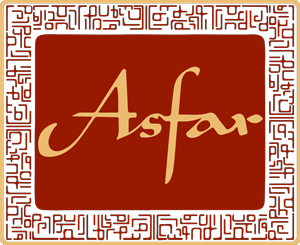Cocoon
5 June – 2 August, 2014
Ayyam Gallery
143 New Bond Street
1st Floor
W1S 2TP, London
http://www.ayyamgallery.com/
Three years after the beginning of the Arab Uprising, and despite numerous supposed false dawns since, there remains little reason for optimism in Syria today. In Cocoon, Paris-based artist Walid El Masri’s intricate reproductions of the dormant subject matter serve both to evoke the isolation and withdrawal prompted by the ongoing bloodshed in Syria, as well as coaxing out a deeper meditation on the wider life-process. While El Masri’s first solo exhibition in London is undoubtedly challenging, the strength of his work as a totality reveals itself in the lingering sensations of unsettling horror and flickering beauty which remain long in the memory.
Upon entering the gallery, the spectator is struck by several sensations. Firstly, the grim tones of grey, black and blue which dominate the subject of the works, a solitary tree laden with cocoons, immediately impress a discomforting sense of death and despair. Although the soft tones and rough texture of El Masri’s cocoons initially express an exceptional shimmering splendour which the eye is swiftly drawn to, proving a welcome respite from the surrounding desolation, the viewer gradually becomes aware again of the setting in which they are situated, into which they must be re-integrated. From here, a battle is drawn between the slivers of hope which can emerge from the cocoon and the bleak reality of its environment, which threatens to envelop it in each subsequent image.
However, the cocoon is not a uniformly hopeful symbol: others have drawn parallels with the shroud used to cover the dead in Syria’s brutal civil wari, which has enveloped over 160,000 people since 2011. To El Masri, the cocoon is a complex symbol. ‘Cocoon for me is the transformation of three phases. The past: the larva. The present: the cocoon. The future: a butterfly or a silk ball. All these meanings provide additional connotations that works with a simplicity to harmonize the cocoon in the space of the painting. The cocoon carries the force of birth, rebirth and death: it resembles – in my opinion – Syria.’
Here, El Masri’s emphasis on the liberating creative potential of subjective repetition, with constant subtle variations on a simple form, is highly poignant. So, too, is his usage of a vanishing point beyond the canvas – a technique which he has previously acknowledged as a Japanese style which ‘instinctively made sense’ii, and which has been likened to the early abstract expressionist works of Yayoi Kusama. In doing so, the subject is gradually emancipated from its form, becoming instead a platform from which new sensations can be expressed, while the incompleteness of the individual work is also emphasised.
‘My work is often based on the neutral value of the material with the minimum treatment, for me this allows to give the materials an extremity of expression, without disruption,’ he explains. ‘A subject may appear to the brain, simple as a symbol. A chair for example does not require great effort to understand it visually. The form of the chair is a compliment of the material. This brings us a simple work, but at the same time, it retains a permanent energy. In fact, this energy is a result of the impression that the material can transform freely and constantly, and it is simplicity and repetition of the elements that helps the transformation of the materials.’
This style, first publicly debuted in his ongoing Chairs project, is an outgrowth of an unorthodox artistic career. El Masri began to work in his family’s Jaramanah tile mosaic factory at the age of 13 and furthered this method during his time studying in Damascus’ Faculty of Fine Arts, where he would reportedly create up to 160 variations of the same subject matter at a time. It is to these formative years that El Masri credits his understanding that ‘when repeating the element, it abandons the obvious meaning with an aim to delve deeper where one can look at a neutral value without generalizing. I have gained this knowledge and interest within repetition through my experience in the art of mosaic making when I was a teenager.’
Nevertheless, while each work lacks even its own unique name, glimpses of individuality emerge in every painting. El Masri’s explanation of this deliberate choice – ‘the title is extracted from the subject of my work, in a simple manner that engages the viewer without any additions that may give away too much’ – is rendered apparent in the varying numbers and sizes of cocoons on each tree. More obviously, however, primary colours often burst through and threaten the overall dourness of the canvas, yet even their shades – toxic yellow, blood red and royal blue – weigh heavy with ambiguity. Only at the end, in a blur of blue and silver, does he hint that the cocoons may mature, after all.
While Cocoon represents a departure from his wider exploration of Chairs, El Masri sees this work as part of his wider project, rather than separate from it. ‘Certainly, all the projects I work relate in one way or another,’ he notes. ‘In my opinion, there is not a fixed process in the artistic creation, I can replace all the elements or add new elements for the meaning of my work to be freed.’
The end result, in shown in Cocoon, is an exhibition where each work cannot be fully understood individually, but instead converge into interlocking sections of a wider totality – yet this in turn quickly gives way to a faint sense of incompleteness, as one becomes aware of the need for more to sustain the illusion of wholeness further. Just as in life generally, in an era when all reports from Syria are notable for the incompleteness, it is this sensation that provides such a powerful illumination today.
